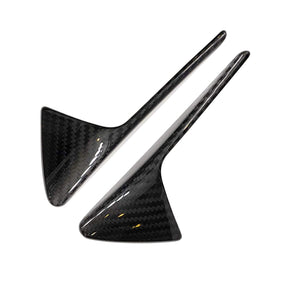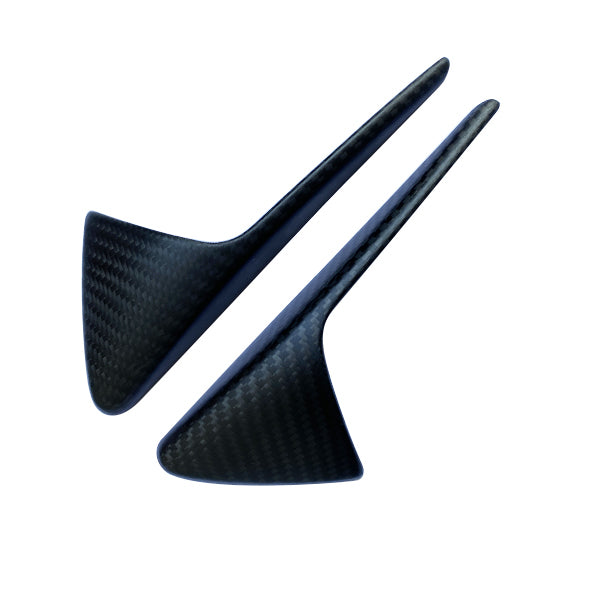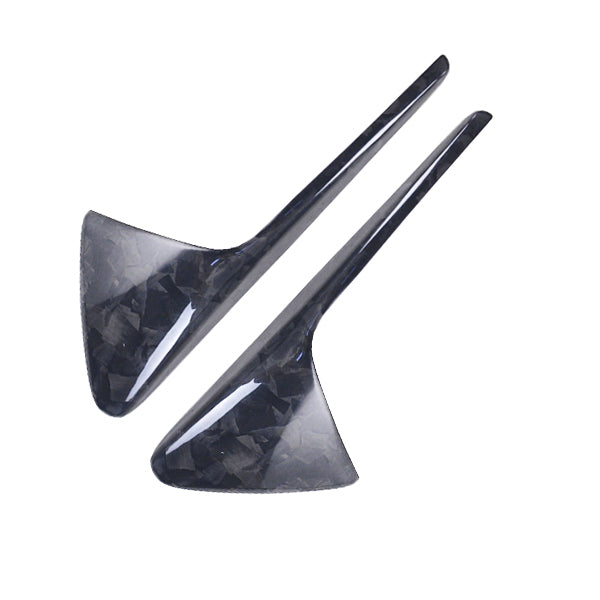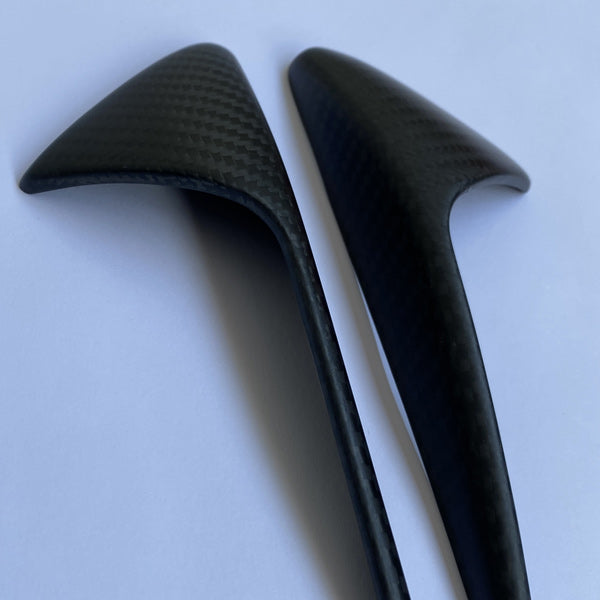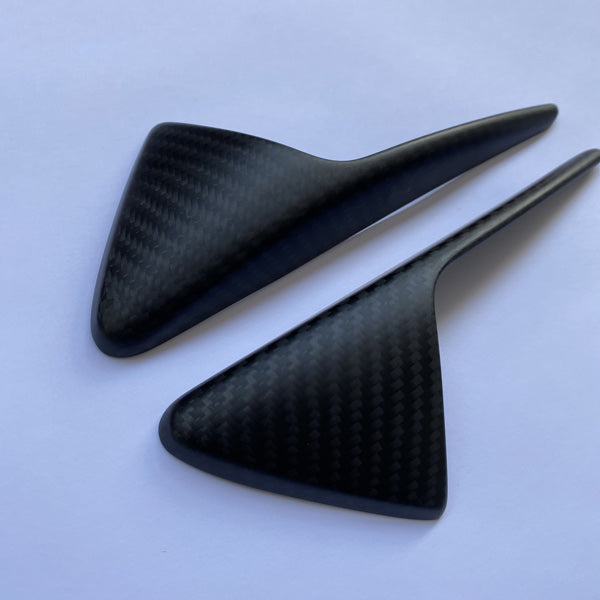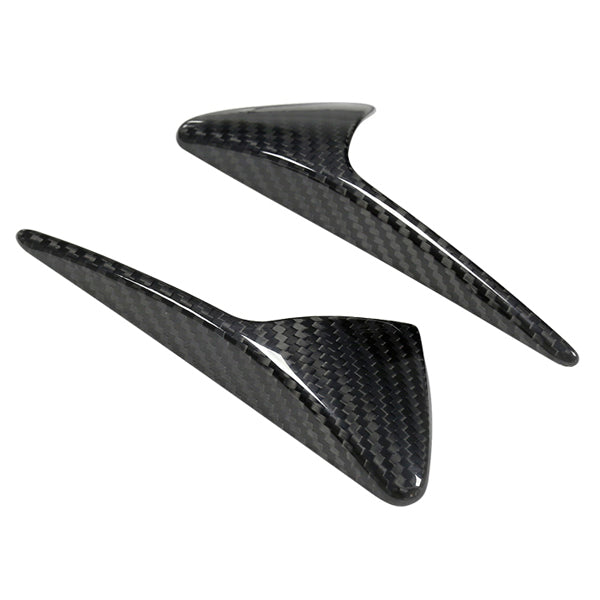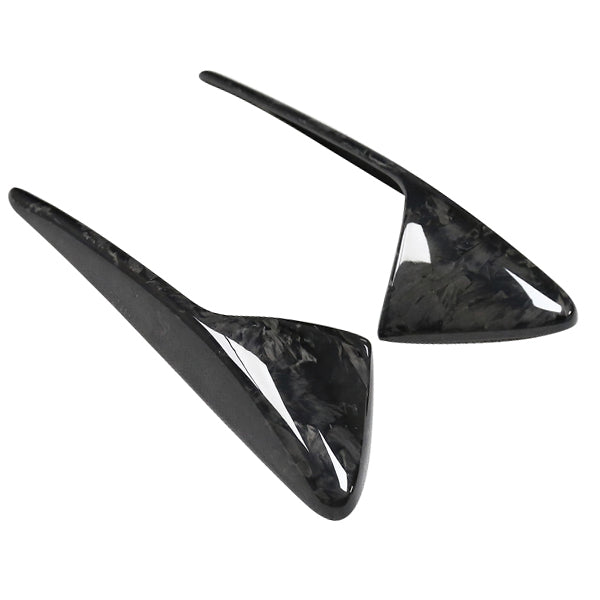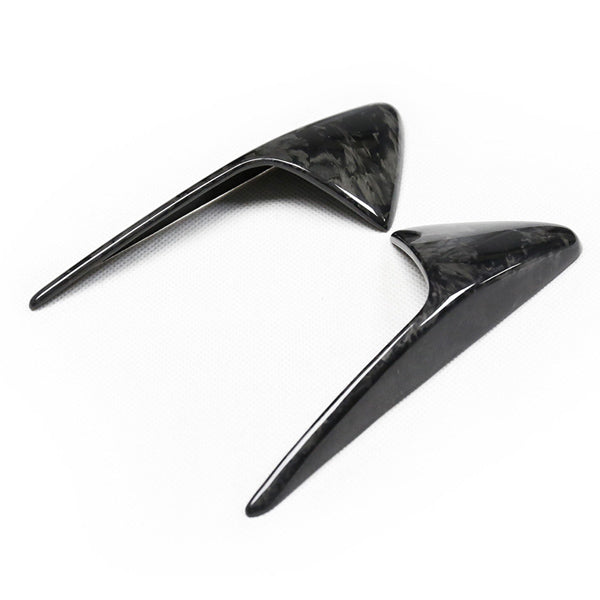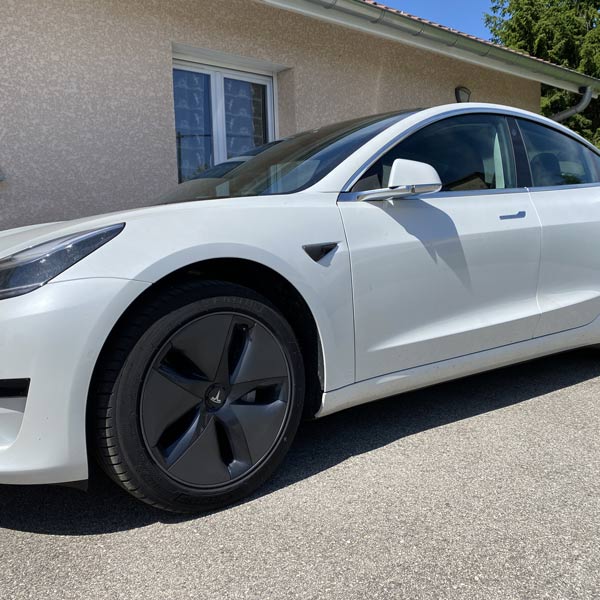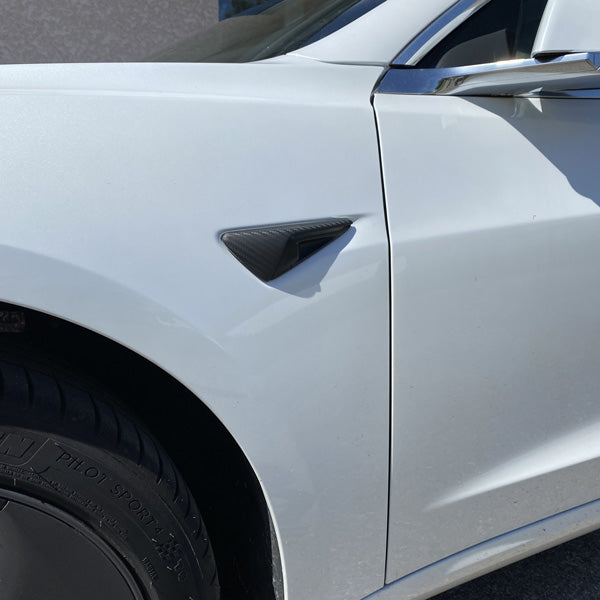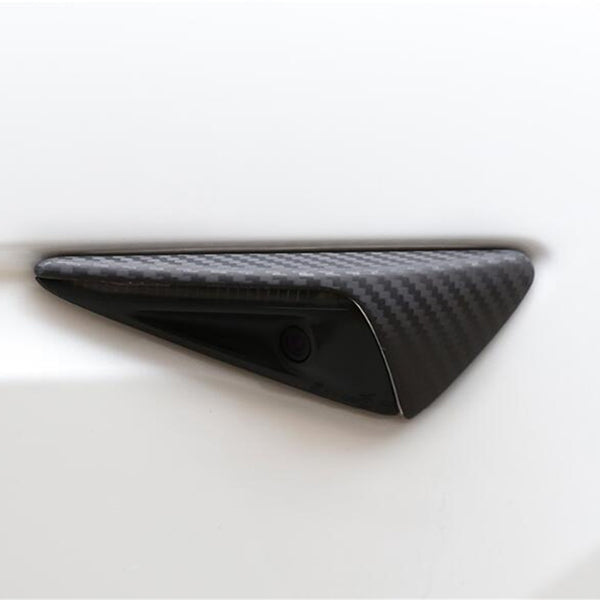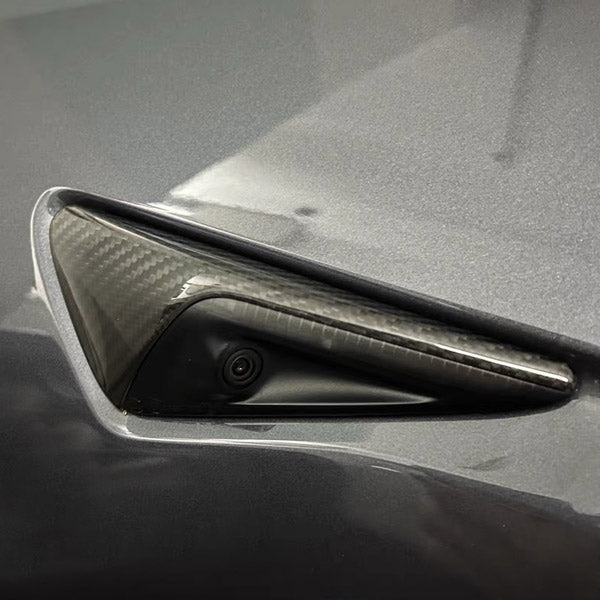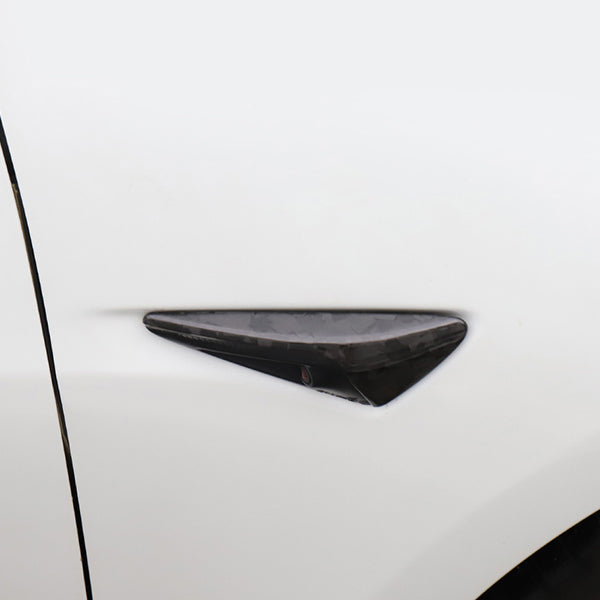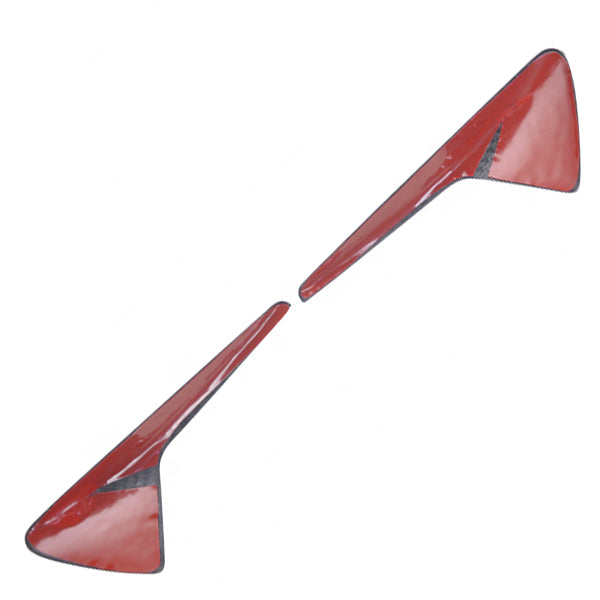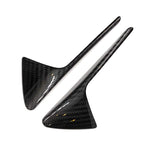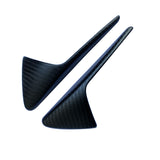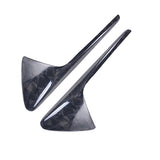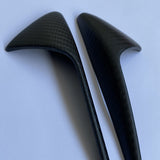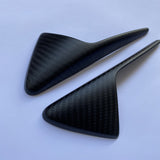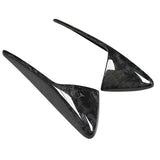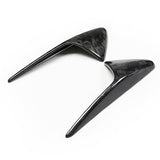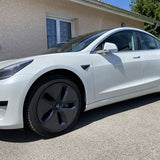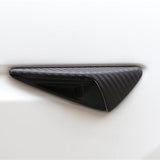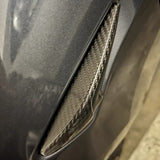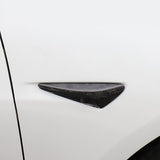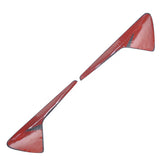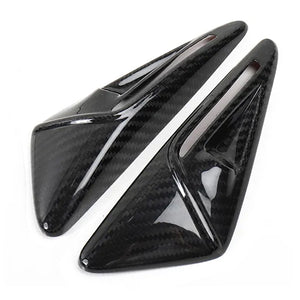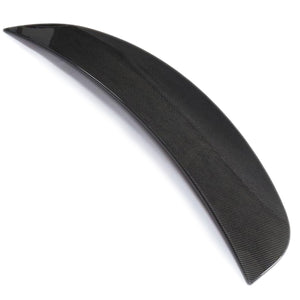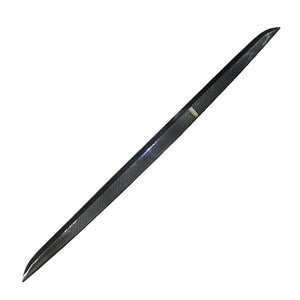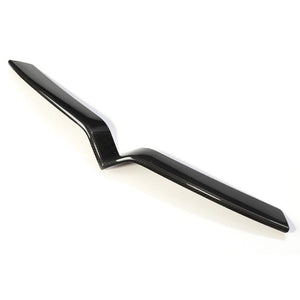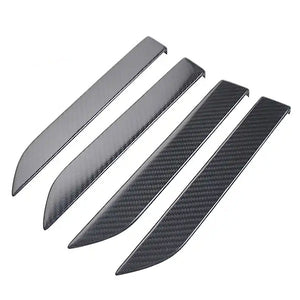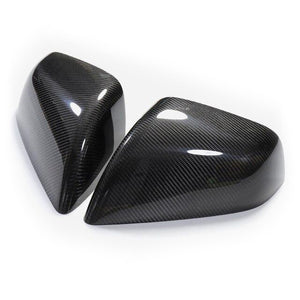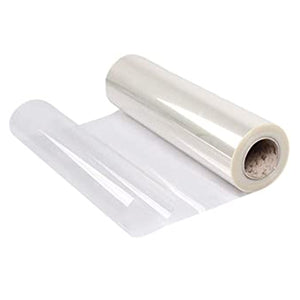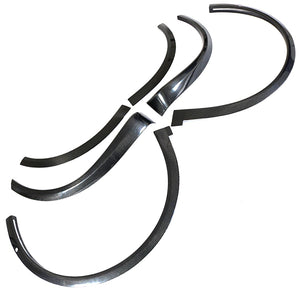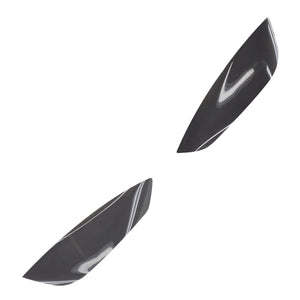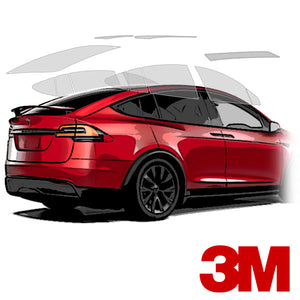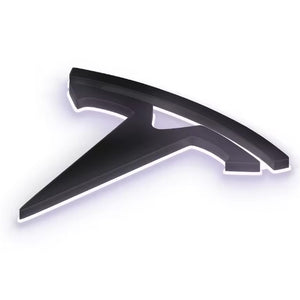Carbon camera cover
Tesla Model S - 3 - X - Y
The carbon camera covers are easy to install. The sport detail of your Tesla that sticks to the original camera mounts.
Suitable for all years
You have to pay attention to the version of your Tesla. The change was made to the year 2021, where you will notice a ledge on the low line of the top camera skin.
These Carbon Camera Inserts for Tesla fit Model S, 3, X and Y by sticking directly to the original plastic.
Characteristics of carbon camera covers for Tesla Model S - 3 - X - Y
- Original design: changes the look of your Tesla
- Perfect finish: made of real carbon
- Applies easily: durable 3M double-sided
- Does not leave glue residue after uninstallation
-
2-year warranty
_________
Do you want to know the ins and outs of Model Sport's carbon manufacturing operation? What is a composite material? The usefulness of a carbon part in the different industries?
We can deal with the subject by focusing on several parts:
• the true meaning of what is called a carbon element
• The benefits of carbon used at Model Sport
• All the modifications for your Tesla
When you finish this page, no detail will escape you.
What is a composite material?
By determination, what is called composite material represents the assembly of two elements together, which does not mix, but which produces an object more resistant to shocks / impact / torsion / flexions than if they are used independently l each other.
Typically you can take reinforced concrete as an example.
What are the types of carbon or Texalium for your Tesla?
In fact, there is a large catalog of carbon types and many ways to work with them.
This is the proper term "carbon fiber composite" to be used, although in most cases it is referred to as "the carbon", this term is much more correct in the world of stratification.
3K twill carbon fabric in 200gr:

Let's start with the most common of carbon fiber composites, 3K carbon in twill mesh. Each way of weaving carbon has a specific name, that of twill is one of them.
To give you an idea, the figure just above shows you how each carbon weft and weave, with each other. Twill is the most widely used of weavings and for good reason, one of them is its maneuverability allowing it to adapt appreciably in a mold with pronounced shapes and curvatures.
To simplify as much as possible, we will not detail the type of interlacing in 3/1, 2/2 and 4/4.
The sign annotated "3K" determines the total number of strands that make up a single carbon frame, in total unit: 3000 strands. As a rough guide, a strand of carbon is only 1/20th the thickness of a hair.
To designate and mention the most common types of carbon used in the various fields of industry, we must mention 1K, 3K, 6K and 12K. The 3K is the most used in the Tesla world.
The term "200 gr/m²" means that 1 m² of carbon sheet, before treatments, weighs 200 grams. For the Tesla community, the 3K twill in 200gr/m² is the most noticed for its aesthetic aspect considered much better than its comrades, but not for its mechanical endurance provisions.
Let's talk about forged carbon:
A surname that may seem abusive for an aspect very different from the standards, however, this molding method is nothing new. To develop it, you must first cut the carbon into small strips and spread it more or less evenly in the mould.
Now we have to put the resin and tighten the positive and negative master of the mold until they are under compression. The temperature of the mold is also increased during this phase.
This production process increases the density of carbon fiber per square centimeter compared to resin and thus gives a stiffer and lighter part.
Lamborghini is the pioneer in the automotive world to have used the latter. Note all the same that its appearance and use has been present since the 80s concerning the production of missile heads.
Let's now highlight the most unknown of all, which is Texalium
It is essential to make room for this material so taken for carbon. However, it is necessary to make the distinction of Texalium.
It is actually a glass fabric loaded with aluminum and then nuanced to the desired color to give it a different configuration.
Aesthetics is essentially favored at the expense of its efficiency, because it is below the glass fabric in terms of mechanical performance. We have to wait longer for other countries to see a novelty arrive here, Texalium is no exception to the rule, because it has been widespread in the United States for a few years, while it is only just becoming known in France.
What does carbon look like visually?
With carbon fiber, what exactly is it possible to manufacture?
If you are interested in a product or part, Model Sport can provide you with a quote.
Is carbon resistant?
An often asked question, perhaps in the wrong way, but rightly so. It is the relationship with other materials that must first be established. As an indication, 1 Kg of carbon is stronger than 1 Kg of aluminum alloy.
It is important to come back to the term “resistant”, because it means everything and nothing. Aluminum is more malleable than carbon, but it can also be more impact efficient.
This is why we find such fine parts for the Tesla brand. The dashboard insert for the Y or 3 models is worth mentioning: this element is only useful for its aesthetics (as with most carbon components for Tesla). Only two layers of carbon fabric are used to manufacture a 1.40m long piece, which will be sent without worry to France or other neighboring countries.
Why is carbon fiber so expensive?
Let's go back to the production of the carbon fabric to assimilate the price of it. Let's already see how the development of a single carbon frame takes place.
It takes a very heavy processing operation in terms of energy consumption to develop carbon fiber: we start from a particular synthetic fiber, called polyacrylonitrile, which will have to be put under oxidation and then carbonized with a specific way to get carbon fiber.
Be aware that this race for ecology gives rise to many projects to continue to use carbon fiber for its lightness, while guaranteeing chemical-free production. There is an exponential growth in demand for the application of bio-based materials to remove the vast majority of chemicals and also cut the price in half.
The material needed to weave the carbon fibers is also more than substantial, in terms of investment and space. The carbon filament remains an absolutely fantastic creation, if we keep in mind that it suggests that 1/20th the thickness of a human hair.
In terms of price, to give you an order of magnitude, the square meter of 200gr/m² twill 3K carbon fabric is worth around €30.
Added to this is the number of tablecloths and the price of the resin, which is not comparable in quality and price. Then, the expertise of a laminator who knows how to install and put the materials in question in the right conditions.
The peculiarities of the carbon of Tesla Model Sport
We follow and prioritize all the production steps of our carbon elements, so let's get to the most essential part.
You need to know the actual shape of an element to be able to ensure a satisfactory result. It is for this argument that the creator of the Model Sport brand, designer and bodybuilder, makes every effort to deliver its know-how in the field of carbon components.
Fabric or pieces of carbon for Tesla?
It goes without saying that the carbon fabric is expressly used for its aesthetic appearance rather than its mechanical abilities. To name just a few benefits of carbon: its resistance to torsion, bending and its lightness.
However, these features are often overlooked in the Tesla world. These are elements intended to reflect the sportiness of the American brand. For the entire Tesla range, the constraints generated on the components, even a body kit, will be largely absorbed, even on a so-called "low-end" carbon.
However, there are multiple categories that will determine the stiffness of carbon, the most common being HR (high resistance) because it is the most flexible and versatile. For all the carbon parts of your Tesla, Model Sport is also based on this type of carbon which is very widespread and so practical on a multitude of points.
It differs from HM (High Modulus) which will certainly be lighter, but also much more brittle, so much so that it almost always has to be combined with HR. The reference that we can provide concerns forged carbon: it is regularly used for its appearance, however its primary purpose is extraordinary resistance.
What is the best resin to use?
Now let's talk about the key element of carbon parts: the resin
For carbon parts that are subjected to high heat, polyester resin (the most common and the cheapest of all) will be given priority, as for the manufacture of carbon parts in large series.
In the motorcycle industry, polyester resin is used in combination with carbon to develop exhaust cartridges. With regard to the production of carbon parts subject to potential loads, the Epoxy resin will give the whole composite material greater resistance.
The anti-UV resin is still a step above: no yellowing in the long term. It is for this argument that we use this product type. Apart from its more translucent configuration, the anti-UV Epoxy resin will resist solar attacks.
This is a specificity that will only be felt several years after installation, but if the anti-UV treatment is not present, beware of yellowing of the parts. Not mentioning this point is a lack of knowledge: if the treatment is not present, beware of too hot summers which will give the carbon parts a duller appearance.
It should also be understood that the resin used will have a price directly related to its application, its quality and its resistance over time.
For the French market, the selling prices of the resin are given below:
• 8 to 10€ for the kilogram of Polyester resin
• The kilo of Epoxy resin is worth between 50 and 60 €
• €55 to €65 for the kilogram of anti-UV Epoxy resin
What is the finish coat on a carbon part?
The finishing varnish is the last touch necessary for the production of carbon parts. We are so meticulous that the initial project was to mass-produce carbon parts that did not require finishing varnish.
So once out of the mould, they had to be perfect. Which induces a very high and counterproductive scrap rate taking into account that the spirit of the Tesla brand is to reduce pollution, so this waste was nonsense.
We therefore apply superior quality varnishes to "standardize" the finish of our carbon parts. The application of the matte varnish is carried out meticulously, as well as the polishing of the parts with a glossy finish to guarantee a perfect appearance.
The kind of carbon on the Tesla S and X automobiles
Although many elements are corresponding in the two versions, there are some differences between the years.
It is for this argument that you will be asked for information about the year and month of production of your Tesla before shipment.
Tesla Model S or X, tuning up its interior
The Model S and X have been forgotten by props since the launch of the Model 3, however these also benefit from a range of upgrades provided.
Replacement carbon components or even inserts that will simply cover the main trim components.
Forged carbon or 3K twill can enrich a sports steering wheel, but also leather or Alcantara trim will complete the personalization of this one. The latter will have a relatively precise focus, which many other accessories will be able to benefit from in the future.
Model S and X bodywork
The performance spoiler for the Model S is the most sought after for the latter. To guarantee an uncompromising result, the Model Sport version of the Performance spoiler will have a different bonding surface and internal structure.
Lighter, but also more adapted to the curvature of the trunk. Although the dissimilarities made on the parts indicated are not visible once the spoiler is in place, it will have the benefit of actually possessing the lightness provided by carbon.
The Plaid version is also in the works at the time of writing this paragraph. The grille or the mirror shells are also parts that will receive their carbon finish.
Although 3K twill carbon is the most common, more "exotic" elaborations such as Texalium may be the subject of a study, in this case contact us by phone or email.
The Model 3 and Y: perfect bases for carbon projects
The Tesla Model 3 is the quintessential electric sedan of its era, with an impressive array of carbon-based upgrades.
Tesla's two best-selling nuclear cars share a lot of similarities.
Model 3 and Y interior
The Tesla community gets a certain culture of its own, carbon inserts are part of it. The feat of the inserts is to succeed in mass-producing an element that must scrupulously respect a given thickness in order to avoid the "addition" effect.
This is where we find the surprising ability of inserts. It is after many trials, errors and corrections that we have succeeded in producing inserts that meet your expectations. The carbon inserts must have a bonding very close to the original components to guarantee an uncompromising covering, but also a perfect cut so that no part can be seen.
Carbon replacement parts, however, are making more and more careful owners happy.
For purists who love beautiful parts with meticulous manual work, the carbon dashboard and door trim will satisfy you.
Model 3 and Y: exterior upgrades
The bodywork of the Model Y or 3 is not to be outdone with a good number of possible carbon-based tune-ups.
Here too, in a 3K twill or forged version, you will have the choice between a matte or shiny finish. The Performance spoiler is a must in the series of carbon parts for Model 3.
The same goes for the Model Y. Having become almost a standard in the Tesla world, it will be fixed directly on the edge of the trunk.
A more radical customization could be the change of the front bonnet to a carbon version. Two benefits: weight loss and an out-of-the-ordinary style.
- 🇫🇷 Gestionnaire Français
- Commandez directement au Fabricant ou au Distributeur
- Payez que votre produit (pas de frais de stockage ni de taxe territoriale)
- Livraison dans toute l'Europe !
Vous remarquerez que le bouton au-dessus vous redirige vers un des distributeurs ou fabricants du produit.
La major partie des accessoires Tesla proviennent de Chine, commander via les plateformes Aliexpress, Alibaba, Amazon, Hansshow ou Jowua vous donnera la possibilité d'obtenir le produit sans intermédiaire.
Les produits vendus en France ou en Europe proviennent du même fabricant Chinois (ou autre), mais avec une marge supplémentaire servant à payer les frais de fonctionnement de la société.
Cependant, l'avantage de commander à proximité est d'obtenir un délai de livraison plus rapide (néanmoins nous proposons aussi des produits expédiés directement depuis des stock Français ou Européens)
Model Sport a initialement commencé en faisant du stock en France, nous connaissons donc quels sont les fabricants de confiance et leur méthode de travail. Si bien que nous les citons avec leurs accords : MAOFA, BFB carbon, Yute Technologie, DCR Tuning, LITA Accessories, Jogon, Ever carbon, Carbonss Tuning, Jowua.
Ces fabricants, parmi quelques autres, sont les plus actifs et sérieux dans leur qualité de fabrication. Nous vérifions que les produits proviennent systématiquement de notre liste de fabricant. Ainsi, que vous commandiez via un distributeur Aliexpress, Amazon ou autre, nous savons que le produit sera de bonne facture.
